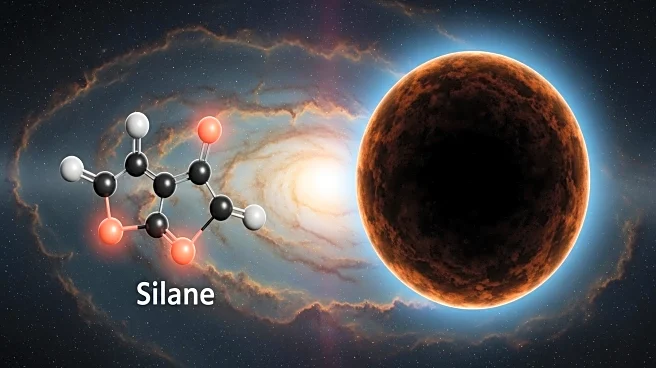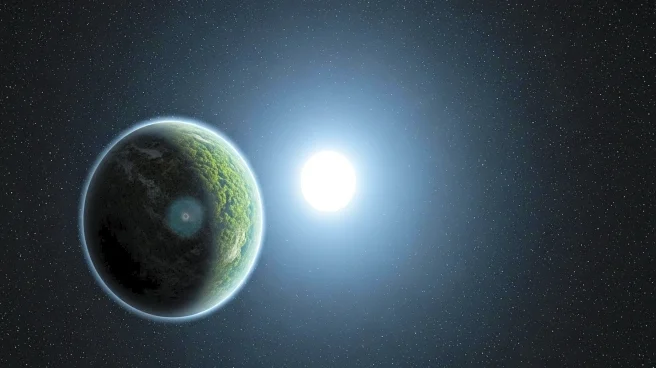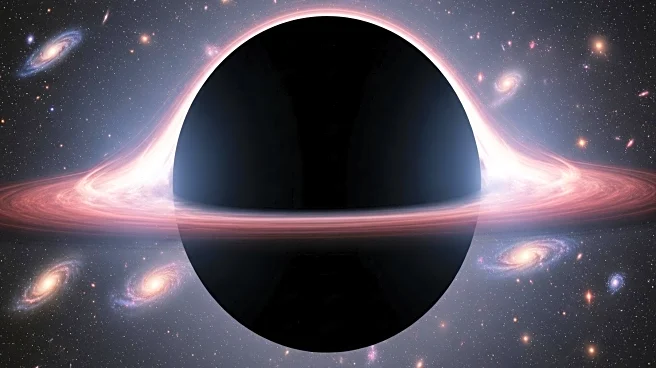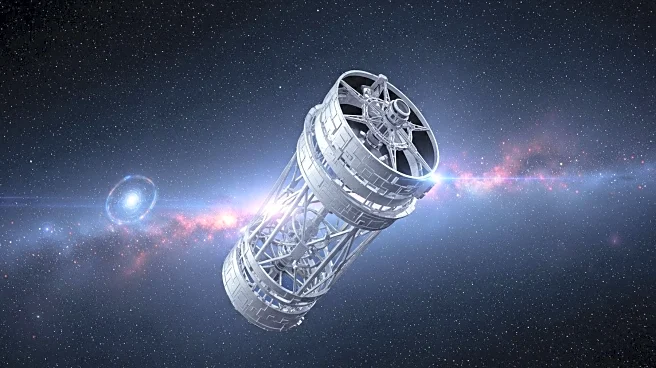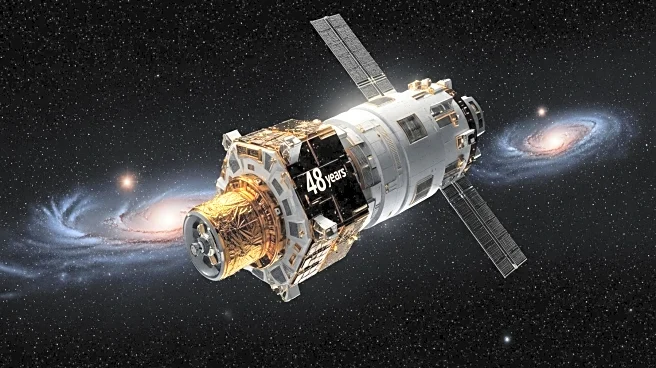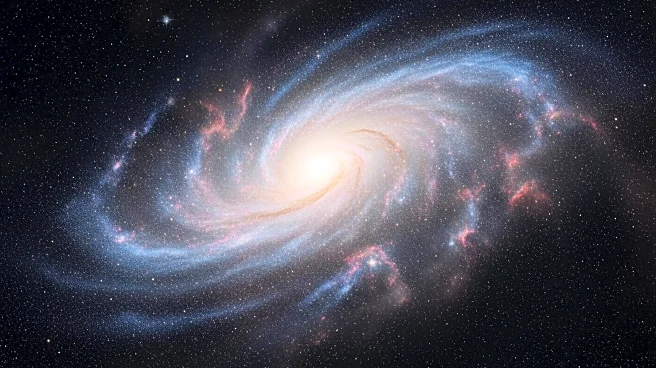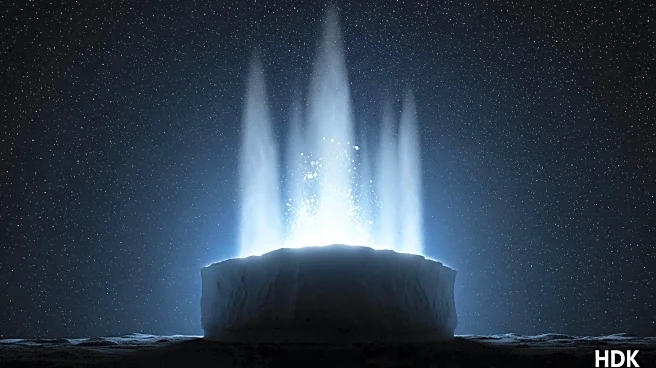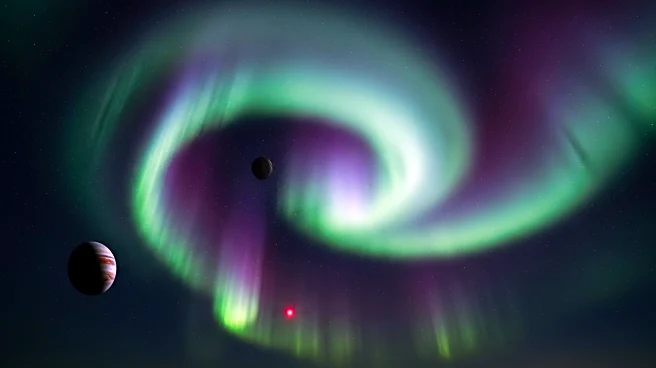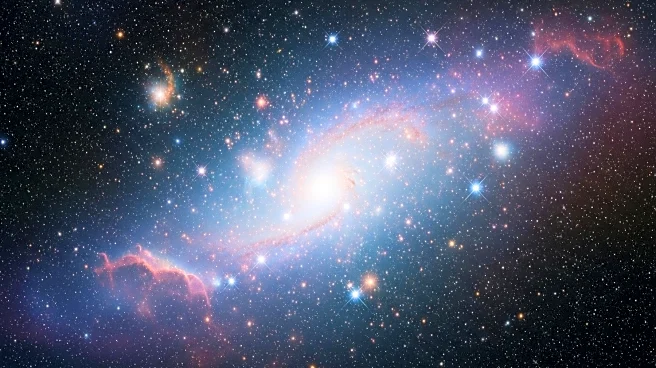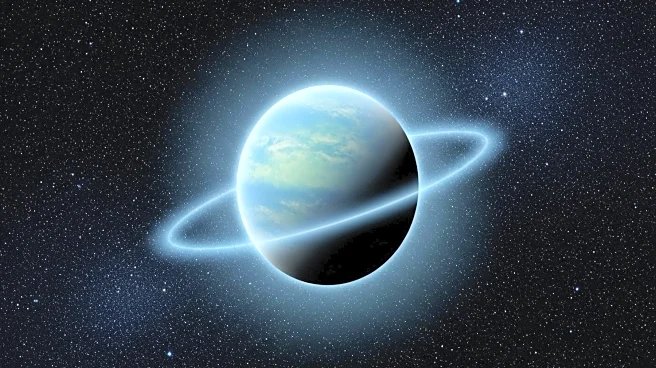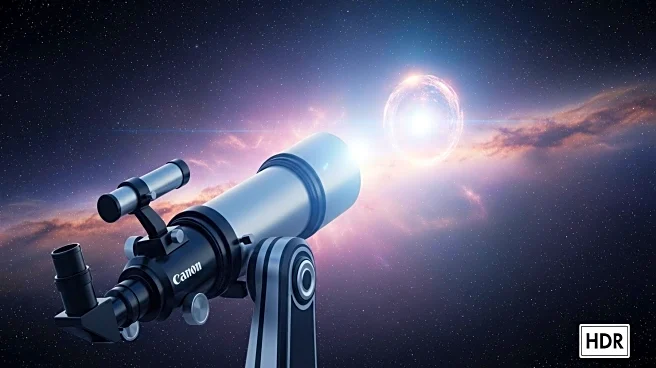What is the story about?
What's Happening?
NASA's James Webb Space Telescope has identified silane in a brown dwarf known as 'The Accident,' providing insights into the chemistry of gas giants like Jupiter and Saturn. This discovery helps explain why silicon has been largely undetected in the atmospheres of these planets. The study suggests that silane forms in environments with less oxygen, offering clues about atmospheric processes in both brown dwarfs and gas giants.
Why It's Important?
The identification of silane in 'The Accident' offers a new perspective on the atmospheric chemistry of gas giants, potentially impacting our understanding of exoplanet atmospheres. This discovery could lead to advancements in modeling planetary atmospheres and improve predictions about the presence of certain molecules. The study highlights the role of extreme objects in revealing processes that occur in more common celestial bodies.
Beyond the Headlines
The findings suggest that the presence of silane in 'The Accident' is due to its formation in an oxygen-poor environment, a condition that may have existed when the brown dwarf formed billions of years ago. This insight into ancient atmospheric conditions could inform future studies of planetary formation and evolution, particularly in relation to exoplanets.
AI Generated Content
Do you find this article useful?
